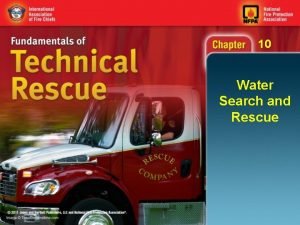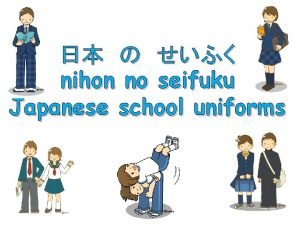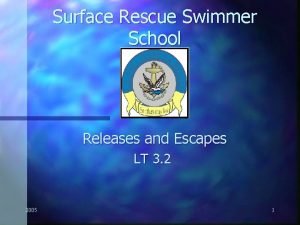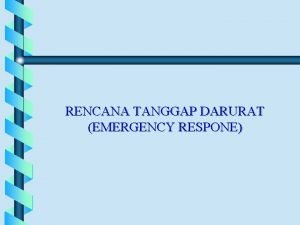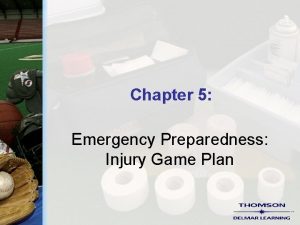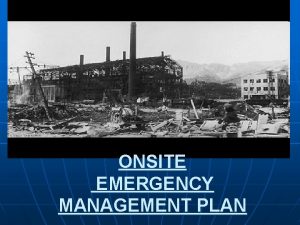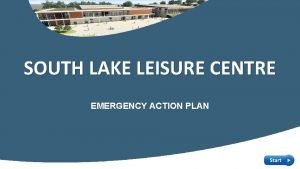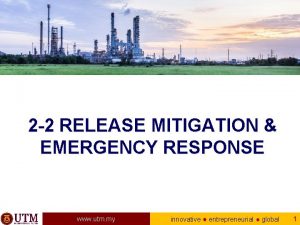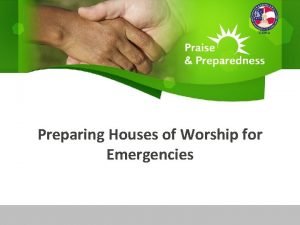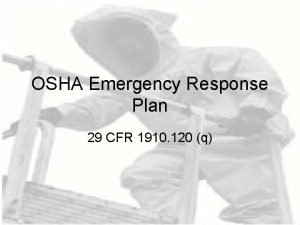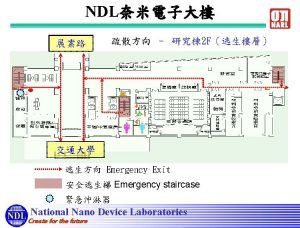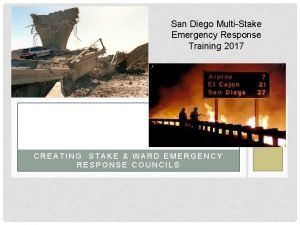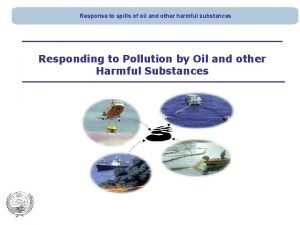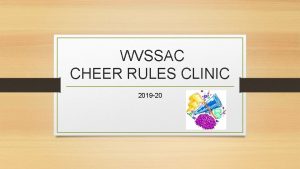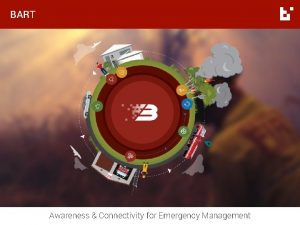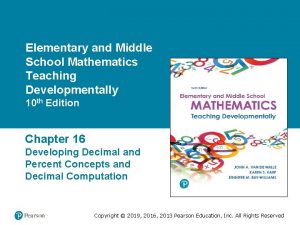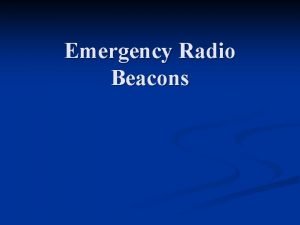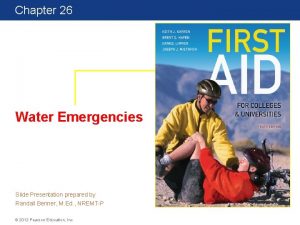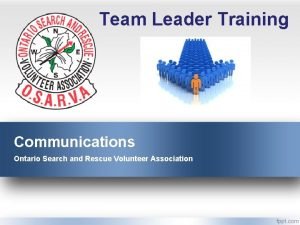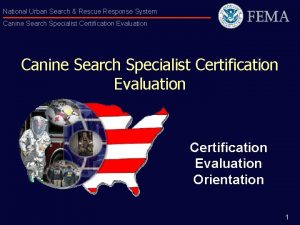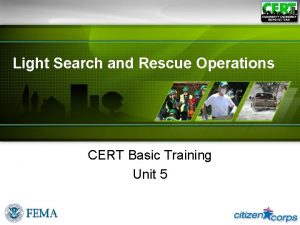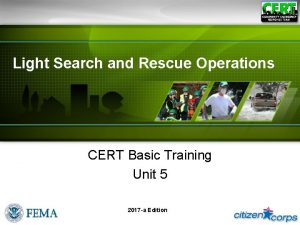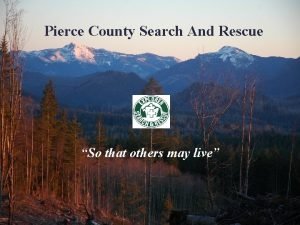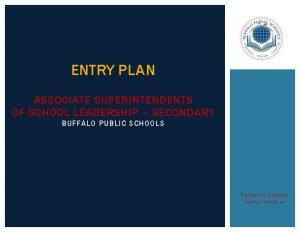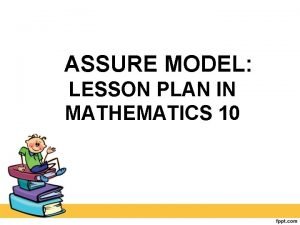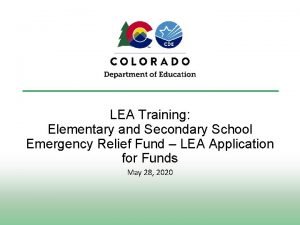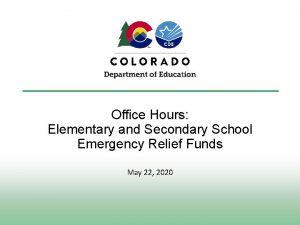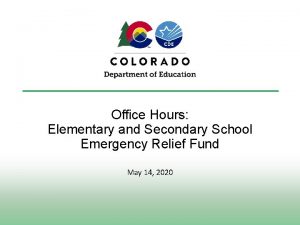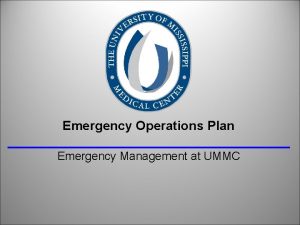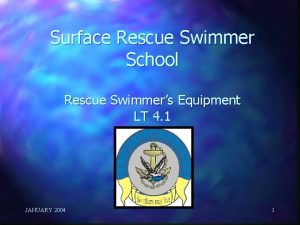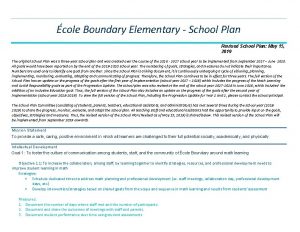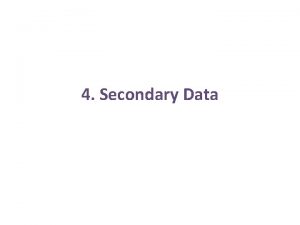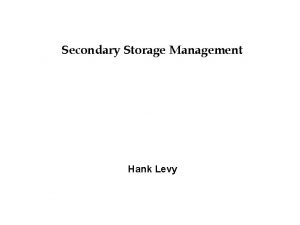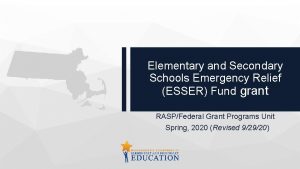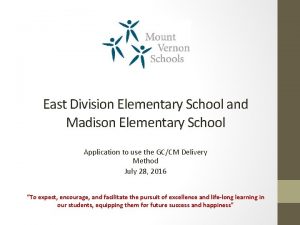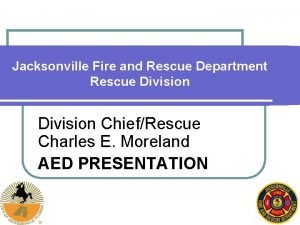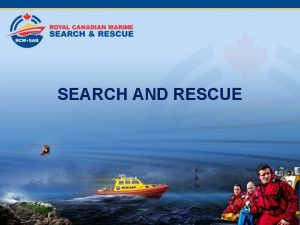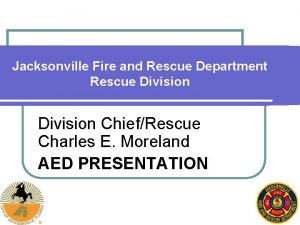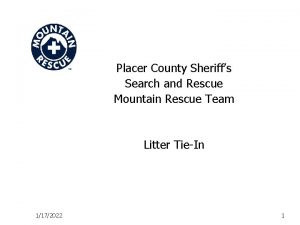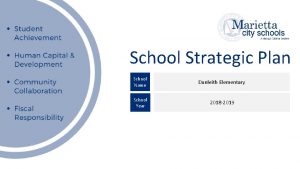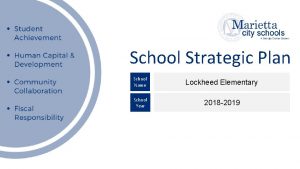American Rescue Plan Elementary and Secondary School Emergency





























- Slides: 29

American Rescue Plan Elementary and Secondary School Emergency Relief- Homeless Children and Youth (ARP-HCY) Competitive Grant Pursuant to Section 2001(b)(1) of the American Rescue Plan Act of 2021 July 2021 1

Purpose The purposes of this funding include: o increasing the identification of homeless children and youth o providing wraparound services considering the impact of the COVID-19 pandemic o providing assistance needed to enable homeless children and youth to attend school and participate fully in school activities 2

Purpose LEAs are to use these funds to focus on: o identifying students o connect students experiencing homelessness and their families to out -of-school time, summer learning, and enrichment programs o to engage students and their families in preparation for this fall LEAs are also encouraged to award contracts to communitybased organizations, as well as to provide wraparound services to help identify historically underserved populations such as rural children and youth, Tribal children and youth, students of color, children and youth with disabilities, English learners, LGBTQ+ youth, and pregnant, parenting, or caregiving students experiencing homelessness. 3

Mc. Kinney-Vento Homeless Assistance Act The educational provisions of the Mc. Kinney-Vento Act were most recently reauthorized under the Elementary and Secondary Education Act (ESEA) December 2015, as Title IX, Part A of the Every Student Succeeds Act (ESSA). More information on the Mc. Kinney-Vento Homeless Assistance Act and other helpful resources can be found on CDE’s homeless education website at www. cde. state. co. us/dropoutprevention/homeless_index, or on the website for the National Center for Homeless Education at www. serve. org/nche. 4

Goals of the Act • To provide services and activities to improve the identification of homeless children and youth and enable such children and youth to enroll in, attend, and succeed in school, including, if appropriate, in preschool programs. • Provide immediate enrollment of homeless children and youth who are not already enrolled. This includes reviewing and revising any laws, regulations, practices, or policies that may act as barriers to the enrollment, attendance, or success of homeless children and youth. • Provide school stability opportunities for homeless students, including transportation to the student’s school of origin, if the parent/guardian or unaccompanied youth requests to remain in the school of origin and it is determined that such placement is in the student’s best interest. • Provide opportunities for parent involvement in enrollment decisions. • Ensure that students experiencing homelessness have equal access to the same free, appropriate public education, including a public preschool education, provided to other children and youth. 5

Goals of the Act (cont. ) • Ensure that students experiencing homelessness are provided services in such a way that they are not isolated or stigmatized. • Identify and remove barriers that prevent students experiencing homelessness from receiving appropriate credit for full or partial coursework satisfactorily completed while attending a prior school, in accordance with state, local and school policies. • Children and youth who meet the relevant eligibility criteria do not face barriers to accessing academic and extracurricular activities, including magnet school, summer school, career and technical education, advanced placement, on-line learning, and charter school programs, if such programs are available at the State and local levels. • Promote school or GED success and completion for students experiencing homelessness. • Support collaboration between LEAs/BOCES and social service agencies serving students experiencing homelessness. 6

Provisions of the Act • Ensure that students experiencing homelessness are provided services in such a way that they are not isolated or stigmatized. • Identify and remove barriers that prevent students experiencing homelessness from receiving appropriate credit for full or partial coursework satisfactorily completed while attending a prior school, in accordance with state, local and school policies. • Children and youth who meet the relevant eligibility criteria do not face barriers to accessing academic and extracurricular activities, including magnet school, summer school, career and technical education, advanced placement, on-line learning, and charter school programs, if such programs are available at the State and local levels. • Promote school or GED success and completion for students experiencing homelessness. • Support collaboration between LEAs/BOCES and social service agencies serving students experiencing homelessness. 7

Homeless Children and Youth definition The term "homeless children and youth" means individuals who lack a fixed, regular, and adequate primary nighttime residence and includes children and youth who are: • Sharing the housing of other persons due to loss of housing, economic hardship, or a similar reason; • Living in motels, hotels, trailer parks (that are deemed as inadequate housing), or camping grounds due to the lack of alternative adequate accommodations; • Living in emergency or transitional shelters; • Abandoned in hospitals; • Residing in a public or private place not designed for or ordinarily used as a regular sleeping accommodation for human beings; • Living in cars, parks, public spaces, abandoned buildings, substandard housing, bus or train stations, or similar settings; • Migratory children living in the above circumstances; and/or • Unaccompanied youth living in the above circumstances. 8

Available Funds $950, 635 is available for this one-time funding opportunity, with 100% of the funding coming from federal dollars. No funding will be financed by non-governmental sources. Based on available funding and established need, it is estimated that awards will be made in the funding range of $10, 000 to $100, 000. 9

Eligible Applicants All Colorado LEAs and BOCES are eligible to apply. Applicants may contract with other agencies; however, the local school system assumes responsibility for setting program goals and monitoring program accomplishments. The LEA/BOCES must serve in the capacity of fiscal agent. 10

Eligible Applicants (cont. ) Charter Schools • Mc. Kinney-Vento law requires that subgrants must go to LEAs. Based on the statute, charter schools should work to collaborate with their authorizer, where possible, to submit a comprehensive Mc. Kinney-Vento grant application. If that is not possible, the charter school may submit a separate Mc. Kinney-Vento grant application but must still use their authorizer or the Charter School Institute as the fiscal agent per CRS - 2230. 5 -503, State charter school institute-establishment-rules (3. 5)(a). • If the grant application for a charter school only, enter under the LEA/BOCES field located in Part. IA-Cover Page – “CSI (or appropriate LEA name) for ABC Charter School. ” • The first signature spot on the RFP Assurances page has been updated to reflect “Name of District Superintendent/BOCES Executive Director/CSI Authorized Representative. ” For the liaison signature, it would be the Mc. Kinney-Vento Liaison that will be handling the grant at the charter school. • If the request is specific to the charter school the information provided and other responses would need to be specific to the school as well. 11

Priority Considerations Priority will be given to applicants that have not received Mc. Kinney-Vento Homeless Assistance Act or American Rescue Plan Elementary and Secondary School Emergency Relief. Homeless Children and Youth (ARP-HCY 1) funding in FY 20 -21. 12

Allowable Use of Funds Overall, costs must be “reasonable and necessary” and “align with the purpose of, and other requirements in, the EHCY statute. ” LEAs also should consider the extraordinary impact of the pandemic on students experiencing homelessness when making decisions about how to use funds. Allowable LEA Uses of ARP-HCY I Funds from the U. S. Department of Education are provided within the April 23, 2021 Letter to Chief State School Officers 13

Allowable Use of Funds • To increase capacity by hiring staff, dedicating resources, and planning partnerships with community-based organizations, among other strategies. • To identify students this spring and to connect students experiencing homelessness and their families to summer learning and enrichment programs this summer (summer 2021), and to engage students and their families in preparation for this fall. • To compete and award contracts to community-based organizations that are wellpositioned to identify historically underserved populations such as rural children and youth, Tribal children and youth, students of color, children and youth with disabilities, English learners, and LGBTQ+ youth, and connect them to educationally related support and wraparound services. • For any of the 16 authorized activities permitted by the Mc. Kinney-Vento Act (see 42 U. S. C. 11433(d)). 14

Allowable Use of Funds (cont. ) 15 For any expenses necessary to facilitate the identification, enrollment, retention, and educational success of homeless children and youth, such as: o providing wraparound services (which could be provided in collaboration with and/or through contracts with community-based organizations, and could include academic supports, trauma-informed care, social-emotional support, and mental health services); o purchasing needed supplies (e. g. , PPE, eyeglasses, school supplies, personal care items); o providing transportation to enable children and youth to attend classes and participate fully in school activities; o purchasing cell phones or other technological devices for unaccompanied youth to enable the youth to attend and fully participate in school activities; and o providing access to reliable, high-speed internet for students through the purchase of internet-connected devices/equipment, mobile hotspots, wireless service plans, or installation of Community Wi-Fi Hotspots (e. g. , at homeless shelters), especially in underserved communities.

Allowable Use of Funds (cont. ) 16 To pay for short-term, temporary housing (e. g. , a few days in a motel) when such emergency housing is the only reasonable option for COVID-safe temporary housing and when necessary to enable the homeless child or youth to attend school and participate fully in school activities (including summer school). For store cards/prepaid debit cards to purchase materials necessary for students to participate in school activities. Per Colorado requirements, store -specific debit cards must be used toward allowable uses of funds or specific intended purposes outlined above. Further, the recipient(s) should be able to provide to the LEA the receipt(s) for items for their files for audit purposes.

Duration of Grant This one-time funding opportunity is available for a performance period through September 30, 2023. 17

Evaluation and Reporting There are three elements required as part of evaluation and reporting: Monitoring Requirement Subgrantees will participate in a minimum of one monitoring visit by CDE staff within the three-year grant cycle. Subgrantees may also be subject to a visit by the U. S. Department of Education. A copy of the tool used to collect information required by the U. S. Department of Education as part of monitoring visits can be found on CDE’s Homeless Education Subgrantee webpage End-of-Year Reporting Subgrantees receiving this funding will be required to submit a program report by the end of the performance period including, but not limited to, addressing how the funding was spent in alignment with the priority areas under the “Use of Funds” section of this document, as well as the services and activities submitted as a part of the ARP-HCY I application. A copy of questions and data collection items required for reporting can be found on CDE’s Homeless Education Subgrantee webpage • 18

Evaluation and Reporting Financial Reporting • Interim financial reports (IFR) are due mid-way through Performance Period and require a copy of the General Ledger for that same period, substantiating the expenditures. IFRs must be submitted via Smartsheet. IFRs are due: • 4/30/22 for period of 6/7/21 -9/30/22 • 4/30/23 for period of 10/1/22 -9/30/23 • Annual financial reports (AFR) are due at the end of the performance period and are part of the budget workbook submitted with the ARP-HCY 1 application. The AFR and a copy of the General Ledger for that same time period substantiating the expenditures listed on the AFR are due: • 10/31/22 for period of 6/7/21 -9/30/22 • 10/31/23 for period of 10/1/22 -9/30/23 19

Data Privacy CDE takes seriously its obligation to protect the privacy of student and educator Personally Identifiable Information (PII) collected, used, shared, and stored. PII will not be collected through the American Rescue Plan Elementary and Secondary School Emergency Relief- Homeless Children and Youth (ARP-HCY) grant. All program evaluation data will be collected in the aggregate and will be used, shared, and stored in compliance with CDE’s privacy and security policies and procedures. Note: Documents submitted must not contain any personally identifiable student or educator information including names, identification numbers, or anything that could identify an individual. All data should be referenced/included in the aggregate and the aggregate counts should be redacted to remove small numbers under n=16 for students or n=5 for educators. 20

Submission Process and Deadline Applications must be completed and submitted through the online application on the CDE Website by Wednesday, August 4, 2021, at 11: 59 pm. Note: the Approval and Transmittal Form and Electronic Budget form must also be uploaded to the online application at the time of submission. Application resources and required documents to include in the submission are available on CDE’s Mc. Kinney-Vento webpage. Incomplete or late applications will not be considered. Applicants should receive an automated confirmation email from the online system upon submission. If you do not, please email Competitive. Grants@cde. state. co. us. 21

Required Elements The American Rescue Plan Elementary and Secondary School Emergency Relief. Homeless Children and Youth (ARP-HCY) Grant online application form includes the following elements, all of which must be completed. See the evaluation rubric for specific selection criteria needed in Part II. Part I: Applicant Information Program Assurances Approval and Transmittal Form Upload the Approval and Transmittal form (Part IC, page 11) within the online application (PDF or Word file). If the application is approved, funding will not be awarded until all signatures are in place. Applications may be submitted without signatures; However, please attempt to obtain all signatures before submitting the application. Part II: Application Narrative Electronic Budget (can be downloaded from CDE’s Mc. Kinney-Vento webpage) Upload the completed Electronic Budget (Excel) within the online application. 22

Review Process 23

Review Process Applications will be reviewed by CDE staff and peer reviewers to ensure they contain all required components. Applicants will be notified of final award status no later than Friday, August 20, 2021. Note: This is a competitive process – applicants must score at least 70 points out of the 100 possible points to be approved for funding. Applications that score below 70 points may be asked to submit revisions that would bring the application up to a fundable level. There is no guarantee that submitting an application will result in funding or funding at the requested level. All award decisions are final. Applicants that do not meet the qualifications may reapply for future grant opportunities. 24

Selection Criteria and Evaluation Rubric Part I: Application Introduction (not scored) Part 1 A: Cover Page- Applicant Information Part 1 B: Program Assurances Part 1 C: Approval and Transmittal Form Part II: Application Narrative (100 points total) The following criteria will be used by reviewers to evaluate the application as a whole. In order for the application to be recommended for funding, applicants must score at least 70 points of the 100 points possible, and all required parts must be addressed. Applications that score below 70 points may be asked to submit revisions that would bring the application up to a fundable level. 25

Assessment of Needs Applicant provided a brief program narrative for how ARP-HCY I funds will facilitate the identification, enrollment, retention, and educational success of homeless children and youth. Applicant clearly demonstrated the ability of the LEA/BOCES to meet the needs of children and youth experiencing homelessness. Applicant indicated number of identified children and youth experiencing homelessness in the LEA/BOCES, preschool through high school for each of the three school years (2018 -19, 2019 -20, 2020 -21. Applicant described trends in data. If identification was “ 0” applicant provided rationale for funding needs. Applicant indicated average attendance for identified children and youth experiencing homelessness for 2019 -2020 and 2020 -21 school years with comparison of attendance to all students? Applicant described the primary current educational and related needs as it relates to the impacts of COVID-19 Reviewer Comments: Minimally Addressed or Does Not Meet Criteria Met Some but Not Addressed Criteria Met All Criteria All Identified but Did Not with High Quality Criteria Provide Thorough Detail 0 3 7 10 0 1 3 5 Total 26 TOTAL

Quality of Services and Programming

Budget Narrative

Questions For program questions contact: Kerry Wrenick, State Coordinator for Homeless Education Wrenick_k@cde. state. co. us | 303 -815 -7010 For fiscal/budget questions contact: Matt Freeman, Grants Fiscal Management Freeman_m@cde. state. co. us | 303 -866 -5692 For RFF-specific questions contact: Mandy Christensen, Competitive Grants & Awards Christensen_m@cde. state. co. us | 303 -866 -6250 29
 Objectives of search and rescue team
Objectives of search and rescue team Japan kindergarten hat
Japan kindergarten hat Surface rescue swimmer school
Surface rescue swimmer school Front head hold escape
Front head hold escape Pengertian shalat qashar
Pengertian shalat qashar Chapter 5 emergency preparedness injury game plan
Chapter 5 emergency preparedness injury game plan Onsite emergency services
Onsite emergency services Lifeguard emergency action plan
Lifeguard emergency action plan Drowning emergency action plan
Drowning emergency action plan Utm emergency response plan
Utm emergency response plan Answer site
Answer site House of worship emergency plan template
House of worship emergency plan template Emergency response plan osha
Emergency response plan osha National emergency communications plan
National emergency communications plan Stake emergency preparedness plan
Stake emergency preparedness plan Shipboard oil pollution emergency plan
Shipboard oil pollution emergency plan Erp emergency response plan
Erp emergency response plan Wvssac eligibility rules
Wvssac eligibility rules Bart emergency app
Bart emergency app Elementary and middle school mathematics 10th edition
Elementary and middle school mathematics 10th edition Epirb uređaj
Epirb uređaj Beacon
Beacon Hip and shoulder support water rescue
Hip and shoulder support water rescue Ontario search and rescue volunteer association
Ontario search and rescue volunteer association Urban search and rescue markings
Urban search and rescue markings Cert search markings
Cert search markings Light search and rescue
Light search and rescue Pierce county search and rescue
Pierce county search and rescue Elementary principal 100 day entry plan
Elementary principal 100 day entry plan Assure model pdf
Assure model pdf
